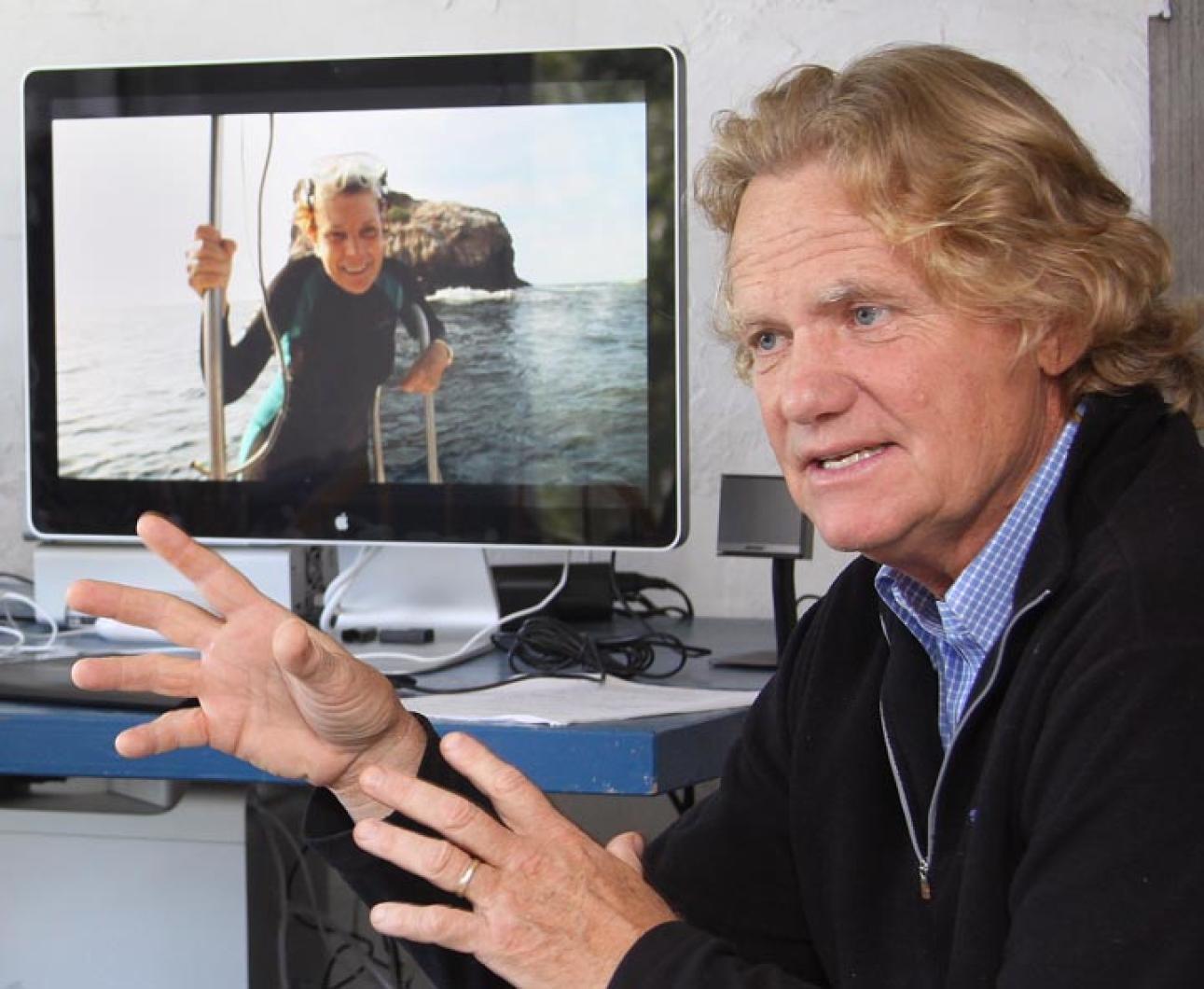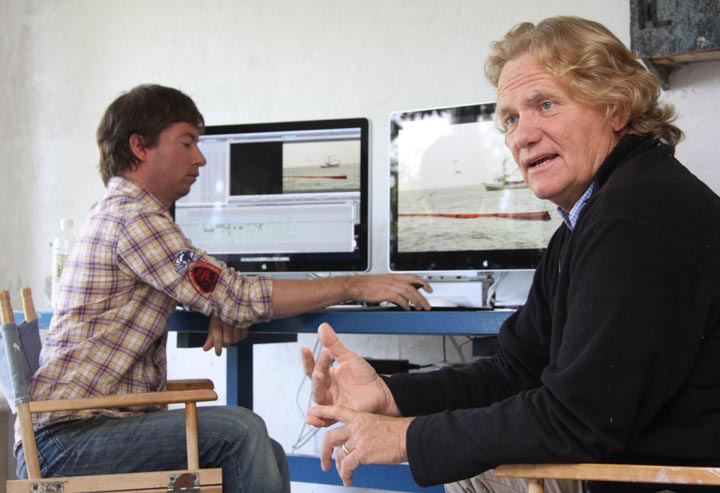In a charming shack overlooking Menemsha, replete with scattered lobster traps, leatherbound nautical books and twin glossy Apple desktops, each armed with the latest in video editing software, Vineyard filmmaker Bob Nixon is putting the finishing touches on his latest documentary. His ambitions for the new film are modest: he wants to save the world.
In April Mr. Nixon embarked on a cinematic expedition with legendary oceans advocate Dr. Sylvia Earle and Fisher Stevens, producer of last year’s Oscar-winning eco-thriller, The Cove. Mr. Nixon’s newest film documents the tireless environmental activism of Ms. Earle, who in the wake of receiving last year’s prestigious TED conference prize has launched an eleventh-hour initiative, Mission Blue, to save the world’s oceans from over fishing and degradation.
“I live on the Vineyard, I’ve spent a lot of time on the water, I’m a lifelong fisherman and conservationist — I thought I was up to speed with what’s happening in the oceans,” said Mr. Nixon, who directs the latest feature, “but I was really disturbed by what I learned from Sylvia. We really are dismantling our life-support system.”
The facts are compelling: 90 per cent of the world’s big fish have been removed from the ocean in the last 50 years; 50 per cent of its coral reefs have disappeared; over 50 million sharks are killed a year. Humans are blindly changing the chemistry of a resource that supplies three out of every five breaths we take.
“I just have one request” Ms. Earle asked Mr. Nixon, as he tells it. “Make a hopeful film.”
Then, just after filming began, an oil rig exploded in the Gulf of Mexico.
In a rough cut of the film Mr. Nixon showed the Gazette this week, Ms. Earle pleads with an almost empty house committee in Washington D.C. shortly after the blowout of Deepwater Horizon not to squander the disaster.
The scene then shifts to the Gulf region itself where fifth generation Louisiana fishermen dejectedly witness the sludgy coup de grace of their industry.
“It’s not really nice to be a fisherman,” says one native crabber. “You’re just kind of born into it. It’s not really your fault. This is in our blood and it’s coming to an end, just like that. It’s heartbreaking.”
When a government official in the movie organizes fishermen to lay oil-containment booms, he also gives them explicit instructions not to allow the press on their boats. The next scene is clearly shot from the perspective of a boom-laying boat.
“We ain’t fishing shrimp anymore,” says crabber Dave Palmer. “We’re fishing oil.”
How did Mr. Nixon get this shot despite the official injunction? “We managed,” he said, laughing. “The roadblocks BP put in our way motivated us to try even harder to get the full story.”
Shortly after the blowout, Mr. Nixon read that a University of Southern Mississippi research scientist, Dr. Eric Hoffmayer, had discovered a massive school of whale sharks just outside the spill zone. He immediately contacted him to launch a tagging expedition.
“You discovered whale sharks?” Mr. Nixon asks incredulously. “The largest fish in the sea? Just off the mouth of the Mississippi?” To him the discovery indicated just how little is known about the world’s oceans that man is so busy exploiting, if not straightforwardly destroying.
The scenes involving the whale sharks reach a lyrical, surreal beauty as Mr. Nixon’s crew floats among dozens of the docile behemoths. An oil rig is perched ominously on the horizon.
“That’s me with a camera in one hand and gear in another,” he said, indicating a figure on the screen floating alongside a feeding, polka-dotted mega-shark. Whale sharks feed on fish eggs by skimming the surface of the water, a particularly troubling behavior in the vicinity of an oil spill.
By the end of their day the crew had tagged the largest of the sharks, nicknamed Samson, whom Mr. Nixon has been tracking nervously over the past few weeks. Tagged 42 miles west of the oil, preliminary data indicates that the shark has thankfully played it safe. Samson, and presumably many of his friends, are now 180 miles west of Deepwater Horizon.
Mr. Nixon said he was never frightened in his long sojourn in the alien world, just awestruck.
“I’ve made 50 documentaries searching for environmental wonders all over the world,” he said. “This one blew me away.”
His colleagues had a similar experience. After five hours swimming with the whale sharks, a euphoric Ms. Earle emerged from the water.
“I’ve never seen anything like this,” she says in the movie. “Never.”
It’s an astonishing statement given the source. Ms. Earle, a.k.a. Her Deepness, first gained renown in 1970 leading a research team of female aquanauts living below the sea for two weeks. She followed the feat in 1979 by setting the female dive record, walking untethered on the ocean floor 1,250 feet below the surface. In 1998 she was named the first-ever “hero for the planet” by Time magazine — a publication she is set to grace the cover of once more on Monday for her recent unflagging environmental efforts. She began her career, though, diving in her native Gulf of Mexico, exhaustively documenting its flora.
“This was personal for her,” said Mr. Nixon.
“What we’re doing to the oceans we’re doing to ourselves,” she says tearfully in the film. “Why can’t we get that message out?”





Comments (1)
Comments
Comment policy »